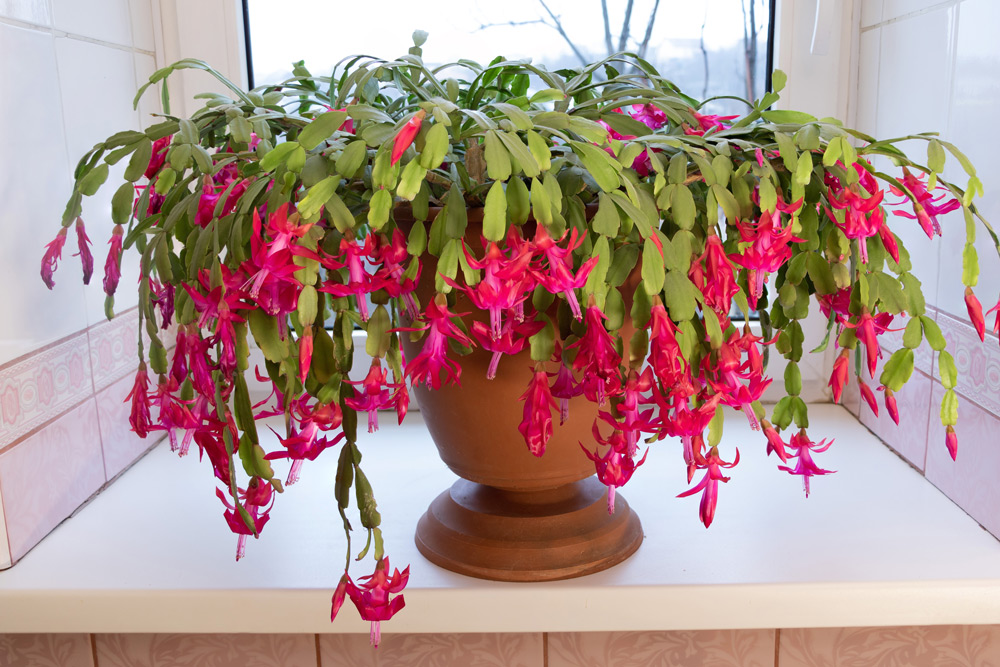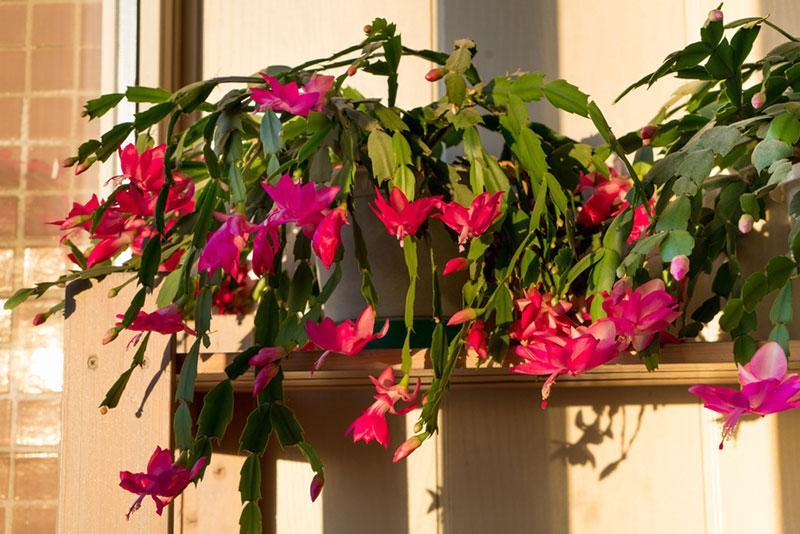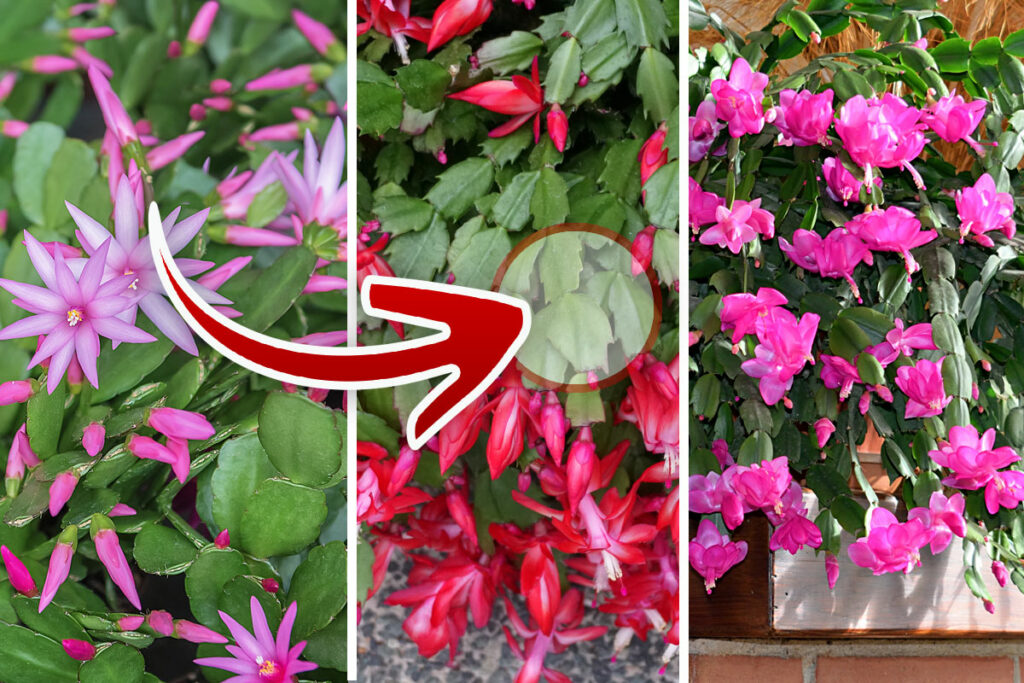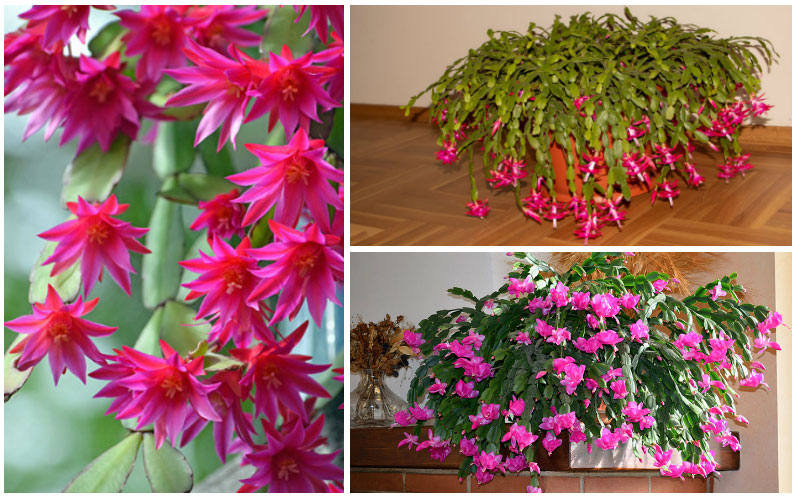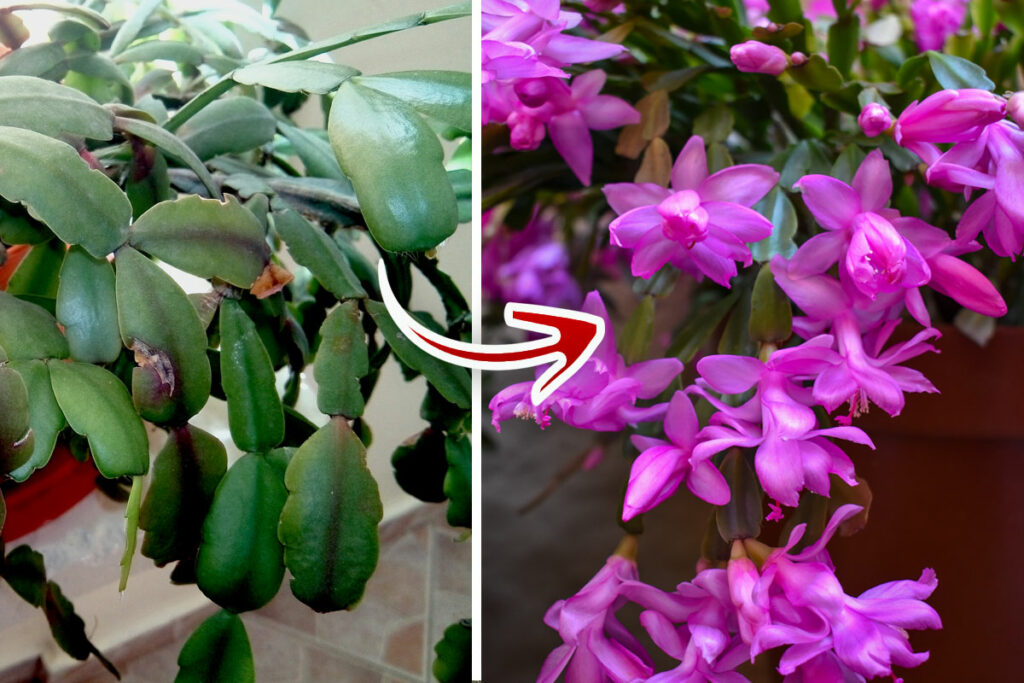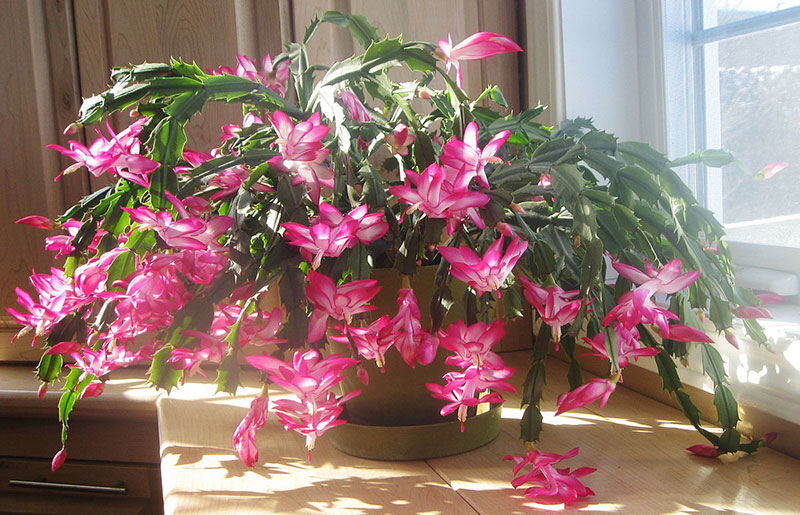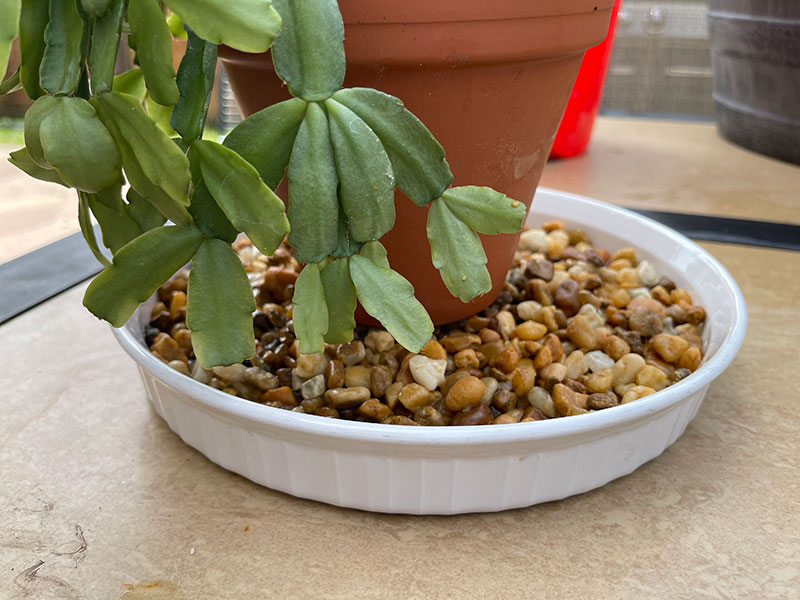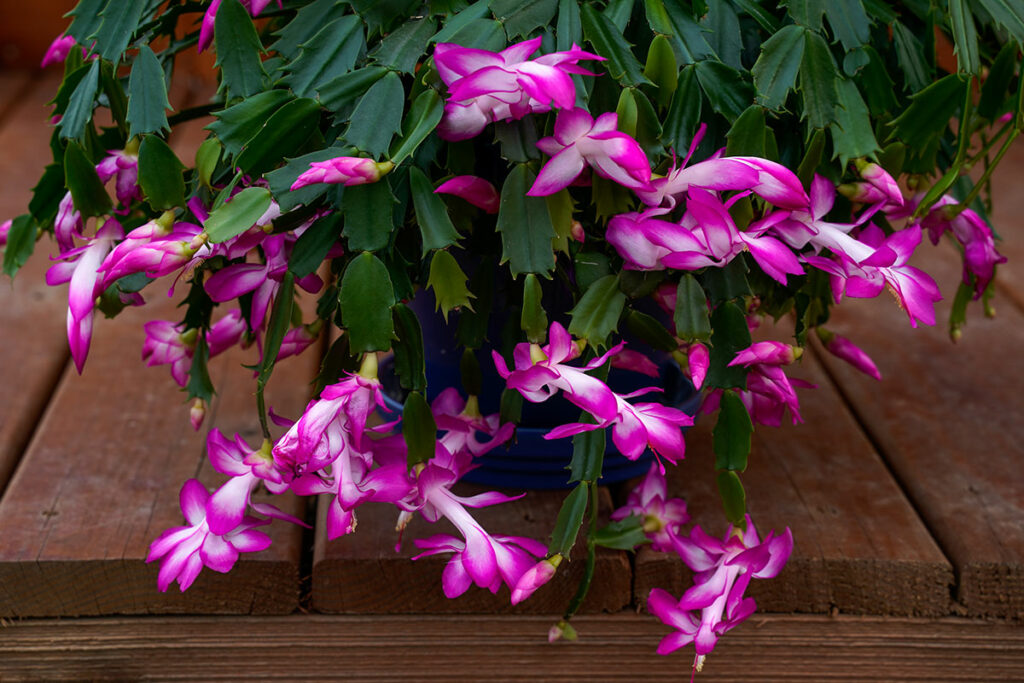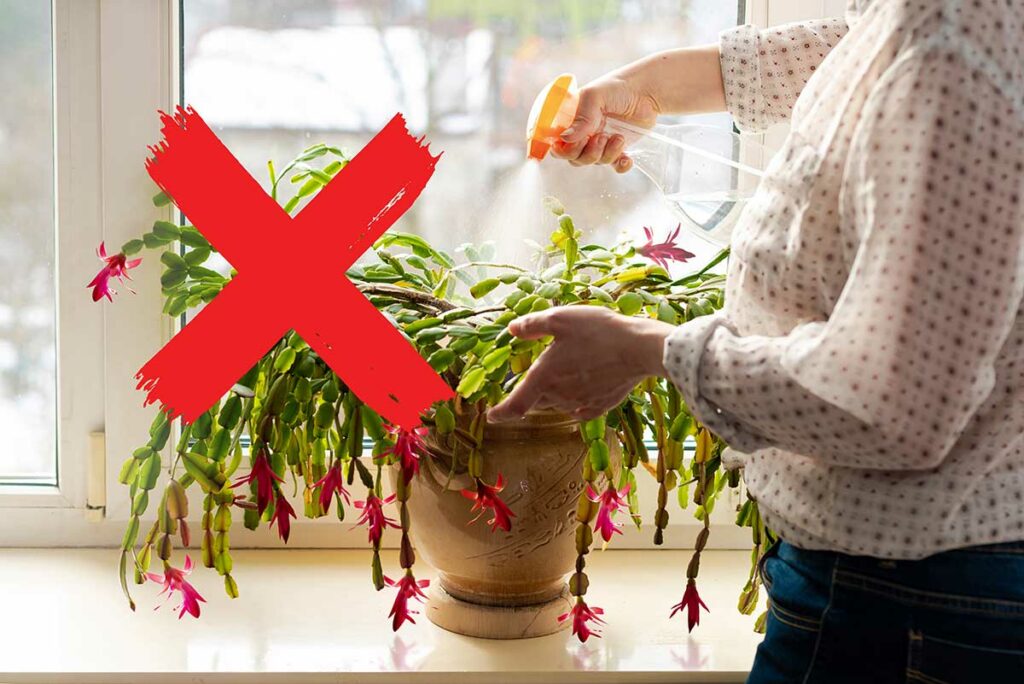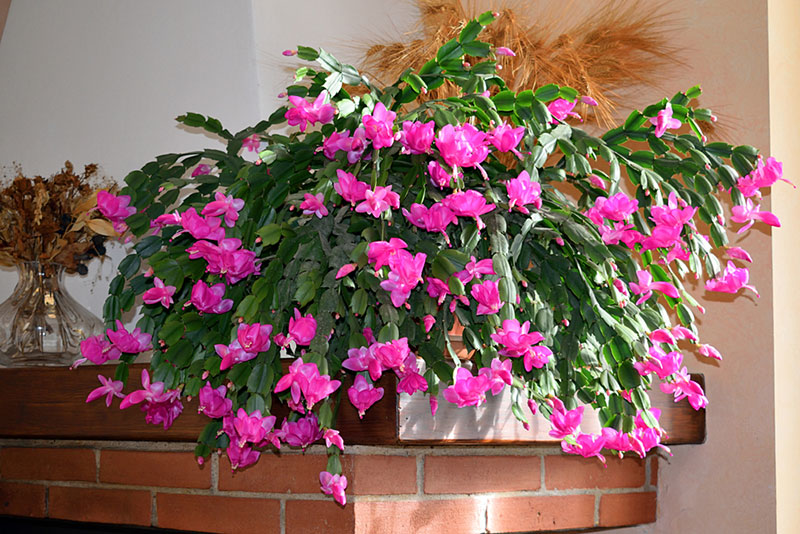
If you are like me, then you may have a Christmas cactus that bloomed beautifully in the past, but you are having a hard time getting the plant to bloom again.
I love the way this plant looks when it blooms, and it is an amazing centerpiece that will brighten up your table for guests to see during the holidays.
Getting the Christmas cactus to bloom during Christmas can be tricky, but if you feed it just right, you will be glad that you took the extra time to figure out the idiosyncrasies of this unique plant.
How to Feed a Christmas Cactus
To start, the plants thrive in indirect sunlight and well-drained soil, so make sure that you have a good spot for the plant to grow. The feeding season of the Christmas cactus is the same as the growing season.
This means that it will need to be fed right before it blooms, which should be about from April to October of the year. With the right fertilizer and a proper feeding schedule, you should have bright blooms just in time for Christmas.
These plants will bud during the cooler days of fall when the light is shorter because it needs 12 hours of light and 12 hours of darkness.
When you are fertilizing this plant, you will either want a bloom formula or a water-soluble formula for the best results.
During mid to late summer, you can use a fertilizer that is high in phosphorus once a month to help enhance the flowers when they bloom.
When the plant stops growing, which will be late in the summer months, it is important to make sure that you stop feeding it as well.
If you continue feeding the plant when it is not actively growing, the salt can build up in the bud, which will keep it from blooming.
Never fertilize a Christmas cactus when the plant begins to flower because it can cause the buds to fall.
Fertilizers to Use for Christmas Cactus
Throughout the season, the best type of fertilizer to use when you are feeding your Christmas cactus is a blend with equal nitrogen, potassium, and phosphorus.
You want a well-balanced fertilizer that can be dissolved in water so that feeding the plant becomes simple.
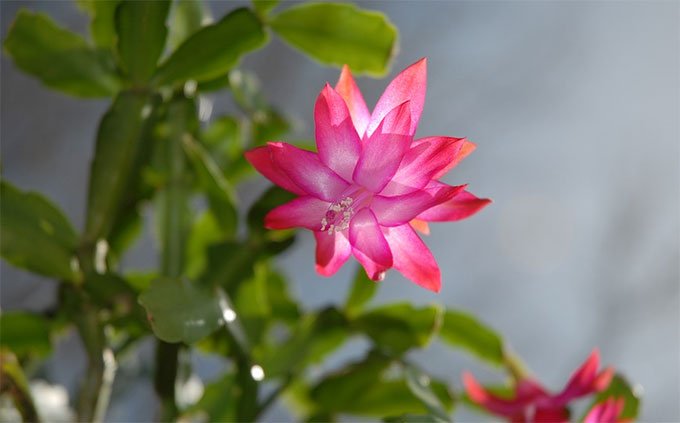
I like to use Jack’s Classic, which is an all-purpose fertilizer by JR Peters that has a 20-20-20 mix. It helps strengthen the roots and the leaves of the plant and gets it ready to bloom when the holidays roll around.
When you are not fertilizing the plant, you can use a mixture of a gallon of water and a teaspoon of Epsom salt. This will help the plant get all of the magnesium that it needs to grow and bloom properly without stunting its growth.
The plant will not need to be fertilized past October because it will go dormant. In addition to stopping the feeding of this plant, you will also need to reduce the water that it receives during this time.






